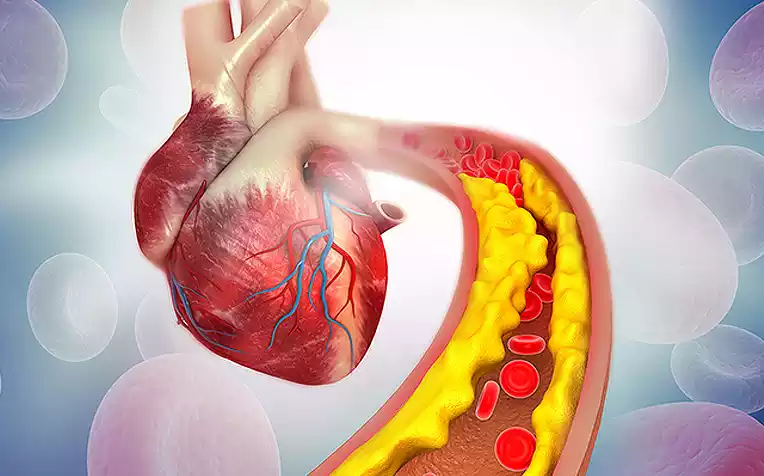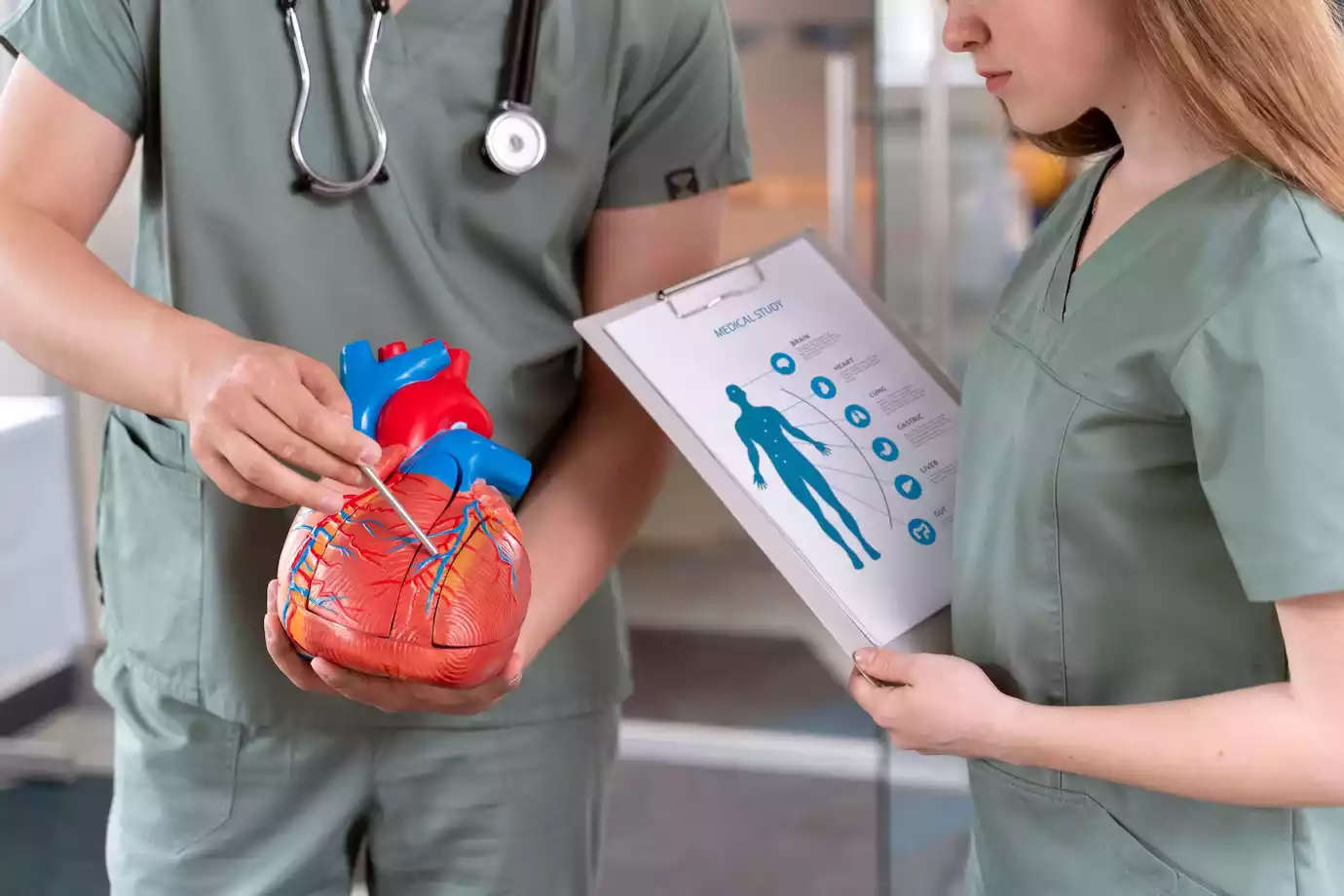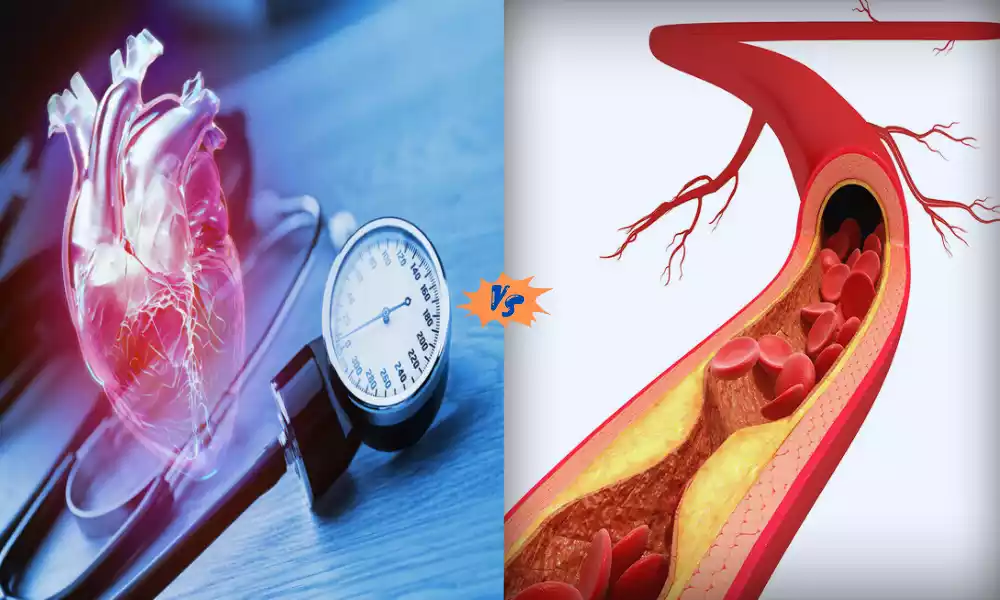Hypertension and Atherosclerosis are both cardiovascular conditions that significantly impact global health, yet they are often misunderstood or considered interchangeable. Hypertension, commonly known as high blood pressure, involves sustained elevated pressure of blood against the arterial walls and can lead to a variety of complications, including stroke and heart failure.
Atherosclerosis is characterized by the narrowing and hardening of arteries due to the accumulation of plaque, potentially leading to heart attacks and other vascular diseases. While both conditions can coexist and have some overlapping risk factors, they are distinct in terms of their causes, symptoms, and treatment approaches. Understanding these differences is integral for effective prevention and management.
What is Hypertension?

Hypertension, commonly known as high blood pressure, is a medical condition characterized by consistently elevated levels of pressure exerted against the walls of the arteries as the heart pumps blood throughout the body.
In simple terms, blood pressure is measured as the force of blood against the arterial walls, and it’s represented as two numbers: systolic pressure (the higher number, indicating the pressure during heartbeats) and diastolic pressure (the lower number, indicating the pressure between heartbeats).
Causes
Hypertension can be caused by a variety of factors, including but not limited to:
- Genetic predisposition
- Lifestyle choices like poor diet, lack of exercise, and high-stress levels
- Underlying medical conditions such as kidney disease, hormonal disorders, or certain medications
Symptoms
Interestingly, hypertension is often termed the “silent killer” because it frequently exhibits no symptoms until it has advanced to a dangerous stage. Some cases, symptoms like headaches, dizziness, and shortness of breath may occur.
Complications
If left untreated, hypertension can lead to severe complications such as:
- Heart failure
- Stroke
- Kidney damage
- Vision loss
Diagnosis
Diagnosis typically involves the regular monitoring of blood pressure levels using a sphygmomanometer. Blood pressure is categorized into various ranges, and a diagnosis of hypertension generally occurs when readings consistently exceed 130/80 mm Hg.
Treatment
Management often involves a combination of lifestyle modifications and medications:
- Lifestyle changes include a balanced diet, regular exercise, stress management, and reducing alcohol and salt intake.
- Medications like antihypertensives may be prescribed to help lower blood pressure.
Routine monitoring and medical consultations are essential for effectively managing hypertension and reducing the risk of complications.
What is Atherosclerosis?

Atherosclerosis is a cardiovascular disease characterized by the narrowing and hardening of arteries due to the buildup of plaque on the inner walls of these blood vessels. Plaque is a composite of fatty substances, cholesterol, cellular waste, calcium, and fibrin.
This buildup can restrict blood flow, leading to a lack of oxygen and nutrients to tissues and organs. The plaque may rupture and form a clot, potentially causing life-threatening events such as heart attacks or strokes.
Causes
Atherosclerosis is often a result of multiple factors including:
- High levels of low-density lipoprotein (LDL) cholesterol
- High blood pressure
- Smoking
- Diabetes
- Genetic predisposition
- Lack of physical activity
Symptoms
Atherosclerosis is often asymptomatic in its early stages. Symptoms generally appear when the narrowing of the artery is significant enough to affect blood flow. Based on which arteries have been affected, symptoms could include:
- Chest pain (angina)
- Shortness of breath
- Leg pain
- Arm pain
- Fatigue
Complications
Untreated atherosclerosis could result in serious consequences, including:
- Heart attack
- Stroke
- Peripheral artery disease
- Kidney failure
Diagnosis
The condition can be diagnosed through various methods including:
- Blood tests to measure cholesterol levels
- Imaging techniques such as angiography or ultrasound
- Physical examination
Treatment
Treatment generally involves lifestyle changes and medications aimed at reducing risk factors:
- Diet modifications to lower cholesterol levels
- Exercise to improve cardiovascular health
- Medications such as statins, blood thinners, or antihypertensive drugs
- In severe cases, surgical interventions like angioplasty or stenting may be required
Managing atherosclerosis often requires a comprehensive approach involving lifestyle changes, medication, and regular monitoring.
Comparison Table of Hypertension and Atherosclerosis
| Feature | Hypertension | Atherosclerosis |
|---|---|---|
| Definition | Elevated levels of blood pressure against arterial walls | Narrowing and hardening of arteries due to plaque buildup |
| Causes | – Genetic predisposition
– Poor diet – Lack of exercise – High-stress levels – Certain medications |
– High LDL cholesterol
– Smoking – Diabetes – Genetic predisposition – Lack of exercise |
| Symptoms | Often asymptomatic, sometimes headaches, dizziness, shortness of breath | Often asymptomatic until advanced, may include chest, leg, or arm pain depending on affected arteries |
| Complications | – Heart failure
– Stroke – Kidney disease – Vision loss |
– Heart attack
– Stroke – Peripheral artery disease – Kidney failure |
| Diagnosis | – Blood pressure monitoring
– Additional tests for organ damage |
– Blood tests for cholesterol
– Imaging like angiography – Physical exam |
| Treatment | – Lifestyle changes
– Antihypertensive medication – Regular monitoring |
– Lifestyle changes
– Medications like statins, anticoagulants – Surgical interventions if necessary |
| Pathophysiology | Pressure-related damage to arterial walls and organs | Plaque-related damage leading to restricted blood flow and potential clot formation |
| Prevention | – Low-salt diet
– Regular exercise – Stress management |
– Healthy diet
– No smoking – Exercise – Regular check-ups |
| Areas Mainly Affected | Heart and kidneys | Any organ system supplied by arteries, especially heart, brain, and extremities |
| Medical Consultation Focus | Lowering and managing blood pressure | Reducing plaque, improving arterial health, and managing underlying risk factors |
This table summarizes the key features of hypertension and atherosclerosis, highlighting their distinct characteristics, causes, symptoms, and treatment options. While both are cardiovascular conditions with potentially severe consequences, they are different in many aspects, making it crucial to understand each for effective prevention and management.
What are the Similarities between Hypertension and Atherosclerosis?

- Cardiovascular Impact: Both primarily affect the cardiovascular system.
- Risk Factors: Share common factors like poor diet, smoking, and lack of exercise.
- Asymptomatic Nature: Often present without noticeable symptoms in early stages.
- Complications: Can lead to serious outcomes like heart attack and stroke.
- Lifestyle Treatment: Lifestyle changes are key in managing both conditions.
- Coexistence: Frequently occur together, with each potentially exacerbating the other.
- Diagnosis: Routine screenings are vital for early detection of both.
- Chronic Nature: Both require long-term management and monitoring.
Future Outlook
The future outlook for hypertension and atherosclerosis hinges on several factors, ranging from advancements in medical science and healthcare to shifts in public health policy and individual lifestyle choices. Here are some key points:
Medical Advancements:
- New Medications: Continued research may lead to more effective and safer drugs for managing both conditions.
- Precision Medicine: Tailored treatment plans based on genetic and lifestyle factors could become more common.
- Non-Invasive Treatments: Less invasive surgical interventions and new techniques for monitoring could make treatment more comfortable and efficient.
Technology:
- Telehealth: Remote consultations and monitoring could make healthcare more accessible.
- Wearables: Advancements in wearable technology could allow for real-time monitoring of blood pressure and other cardiovascular indicators.
Public Health:
- Prevention Programs: Increased focus on prevention, especially in younger populations, could help reduce the incidence of these conditions.
- Health Education: More widespread education on healthy lifestyle choices could make a significant impact.
Lifestyle Trends:
- Diet and Exercise: As awareness grows, healthier diets and more active lifestyles may become the norm rather than the exception.
- Mental Health: An increased understanding of the relationship between stress, mental health, and cardiovascular diseases could lead to more holistic treatment approaches.
Policy and Access:
- Healthcare Access: Improved access to quality healthcare can lead to early diagnosis and better management.
- Policy Changes: Government policies aimed at reducing smoking, improving the quality of food, and promoting physical activity could have a broad impact.
Global Factors:
- Aging Population: As the global population ages, the incidence of both conditions is expected to rise, requiring proactive public health measures.
- Climate Change: Emerging research suggests that environmental factors, including pollution, may also impact cardiovascular health.
By addressing these various aspects, there’s hope for a future where both hypertension and atherosclerosis are better understood, more easily managed, and perhaps even preventable to a greater extent than they are today.
Final Word
Hypertension and Atherosclerosis are distinct yet interconnected cardiovascular conditions that present significant public health challenges. Though they share common risk factors and complications, their underlying mechanisms, symptoms, and treatment approaches differ.
The future outlook is promising, with advancements in medical research, technology, and public health measures poised to improve diagnosis, treatment, and prevention. Understanding the differences and similarities between these conditions is crucial for effective healthcare strategies and individual well-being.



